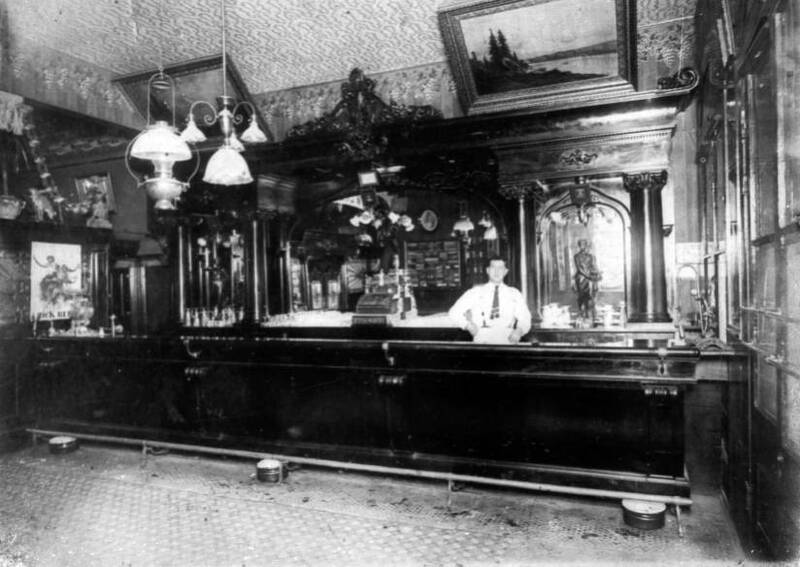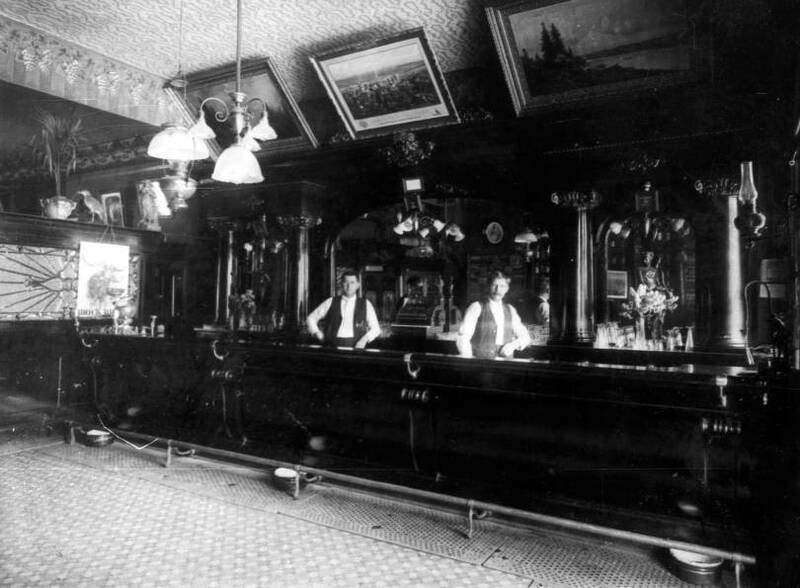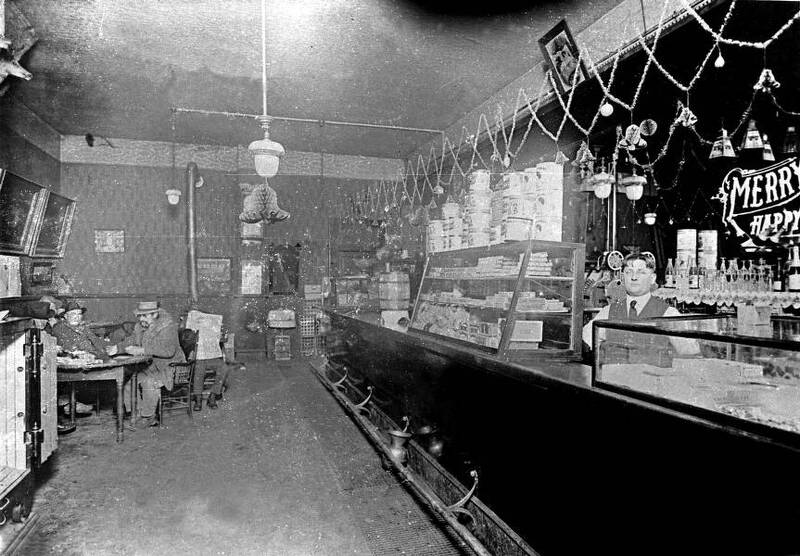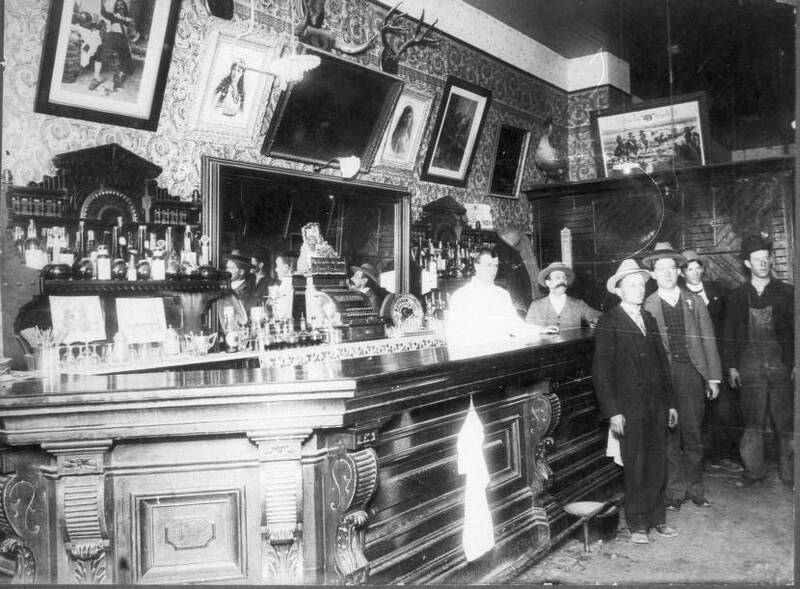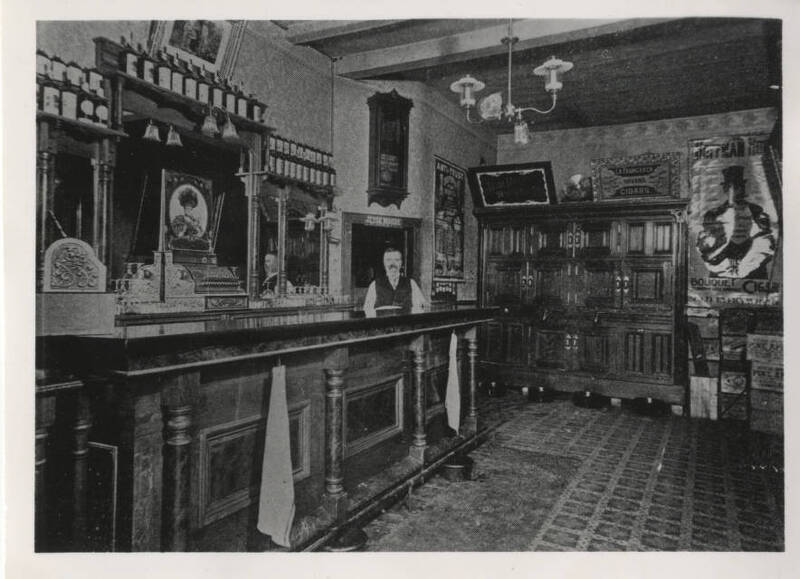Exhibits
Capital Saloon
In Quincy, Plumas County, California, the Capital Saloon was a frequented establishment that allowed residents to unwind after a long day's work.
Imagine if this text was 150 - 300 words. I think that would be the perfect amount of text to describe the items within the exhibit. I'm still trying to figure out how to make the font size larger.
Quincy's Capital Saloon
View of two men inside of the Capital Saloon in Quincy, Plumas County California, 1910.
This is the same saloon as the first item in this exhibit. Notice the decor changes. This image has a hung picture in the middle of the bar. The bartender from the first image appears to our left in this one.
If you can spot five differences in the images, you win a prize!
Old Chico Saloon
The Old Chico Saloon, Chico, California, in 1890.
This image was most likely photographed in December. Although cut off, the decorations on the image's right appear to say "Merry Christmas" above and "Happy New Year" below. The decorations throughout the image also suggest Christmas time. Also, the gentleman sitting at the table in the images background is wearing a heavy winter coat.
Saloon
Portrait of six men in the bar taken in circa 1900. This image was donated by the Plumas County Museum, and there is no information giving the name of the establilshment. When I look at these saloon images, I always notices that the framed photographs are angled down. Why is this?
This is the explanation a bot gave in Quora:
The practice of hanging pictures tilted off the wall at an angle in Victorian homes was known as "desultory hanging" or "asymmetrical hanging." This style of hanging artwork was popular during the Victorian era for several reasons:
- Aesthetic Appeal: Victorians valued visual interest and variety in their interior decor. By hanging pictures at an angle, they could create a more dynamic and visually engaging display on their walls. This technique added a sense of whimsy and informality to the decor, breaking away from the more formal and symmetrical arrangements commonly seen in earlier periods.
- Avoiding Monotony: Asymmetrical hanging allowed Victorians to break free from rigid design conventions and inject a sense of individuality and creativity into their homes. It provided an opportunity to showcase their personality and artistic sensibilities by arranging their artworks in a more unconventional and eclectic manner.
- Creating a Sense of Movement: By tilting pictures off the wall, Victorian homeowners could create the illusion of movement and energy within the space. The angled positioning of the artwork added a sense of dynamism and liveliness to the room, drawing the eye and creating a more engaging visual experience.
- Experimental Approach: The Victorian era was a time of experimentation and innovation in art and design. Asymmetrical hanging reflected the era's interest in exploring new ideas and pushing the boundaries of traditional aesthetics. It allowed individuals to play with different compositions and arrangements, encouraging a more playful and experimental approach to interior decoration.
Overall, the practice of hanging pictures at an angle in Victorian homes was a reflection of the era's eclectic and adventurous spirit, as well as a way for individuals to express their creativity and personal style in their living spaces.
Union Hotel Saloon
View of the inside of Office Saloon at Union Hotel, Chico, California in 1910. As in the previous item, the framed picture above the bar is placed at a downward angle.
Below the bar, on the customer's side, there are two spittoons for chewing tobacco. Although a nice establishment, there were still patrons spitting tobacco on the ground. You will find the same in the three previous images.

